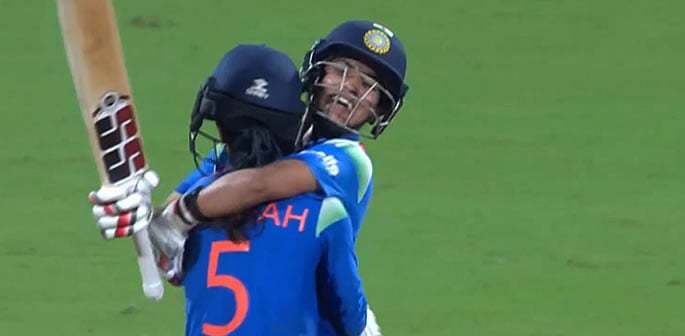"That's a huge, huge shift."
India’s women’s cricket team has captured global attention after reaching the final of the ICC World Cup.
The side put on a scintillating display to defeat Australia, who were the tournament favourites.
Their run to the final has reignited conversations about gender equality, representation, and the professionalisation of the women’s game.
Once treated as outsiders in international cricket, India’s players now command packed stadiums and prime television slots.
Their rise mirrors the transformation of cricket itself – from a male-dominated space to a more inclusive and competitive global sport.
With India set to play South Africa, we explore whether this could be a turning point for women’s cricket in the country.
A New Era

For decades, women’s cricket in India existed in the shadow of the men’s team.
Limited funding, fewer fixtures, and minimal media coverage made it difficult for female cricketers to gain recognition.
That situation has changed dramatically in recent years.
Increased investment from the Board of Control for Cricket in India (BCCI) and a surge of corporate sponsorship have transformed the landscape.
The launch of the Women’s Premier League (WPL) in 2023 was the turning point.
The tournament offered female players an unprecedented platform to compete alongside and against the world’s best. It also brought financial security and exposure that previous generations could only imagine.
Former India captain Mithali Raj said: “Now it is not looked down upon.
“Cricket is a profession, it’s a sport, and everybody is keen to get their girls to play cricket. That’s a huge, huge shift.”
This structural change has been reflected in the national team’s performance.
India’s World Cup campaign has been defined by composure and consistency.
Smriti Mandhana’s elegant batting and Harmanpreet Kaur’s tactical leadership have set a new standard. Their influence has extended beyond the field, making them role models for millions of young girls who now see cricket as a realistic career.
This rise is not a coincidence. A combination of stronger grassroots systems, better facilities, and international exposure has created a professional ecosystem.
India’s Under-19 team winning the T20 World Cup in 2023 showed that the next generation is already benefiting from this pipeline.
The growth of domestic tournaments has also allowed selectors to identify emerging talent.
With women now playing more competitive matches throughout the year, the national side has become deeper and more experienced.
This improvement in structure and depth could help sustain India’s success for years to come.
Beyond the Boundary

India and South Africa are chasing history, but an Indian victory could catapult the women’s game to new heights in terms of reach and investment.
The team’s run to the World Cup final has already highlighted how far women’s cricket has come in India, and what it could become if the momentum continues.
Former IPL batter Abhishek Jhunjhunwala told BBC Test Match Special:
“The pace at which women’s cricket is growing in India is unbelievable.
“Girls have started playing on the streets with boys, which you never used to see happen.”
“They want to be a Jemimah Rodrigues or a Deepti Sharma. It is a proper career now for women. If India go on to win this World Cup, this will change women’s cricket.
“The game is growing rapidly worldwide but in a commercial aspect, this will change drastically.”
The shift is visible in the stands. Around the stadiums, boys and men proudly wear shirts bearing the names of Smriti Mandhana or Harmanpreet Kaur, creating an energy and visibility once reserved only for the men’s game.
The crowds have been electric for India’s fixtures, signalling a new level of engagement from fans who might not have previously followed women’s cricket.
The Women’s Premier League (WPL) has already begun transforming the sport.
With competitive salaries and exposure to international talent, it has laid the groundwork for professional growth. Yet the semi-final performance suggests this could be just the beginning.
A World Cup victory would not only elevate the national team but also send a clear signal to broadcasters, sponsors, and young players that women’s cricket in India is both commercially viable and culturally significant.
India’s women’s team has done far more than reach a World Cup final; they have rewritten what it means to be a professional female cricketer in one of the world’s most passionate sporting nations.
Their success embodies progress, opportunity, and belief.
It shows that when women are given the same investment and visibility as men, they can deliver world-class performances.
If India continues to build on this foundation, they could lead a global redefinition of women’s cricket: in professionalism, visibility, and respect. The question is no longer whether women’s cricket deserves equal attention, but how quickly the rest of the world will follow India’s lead.






























































